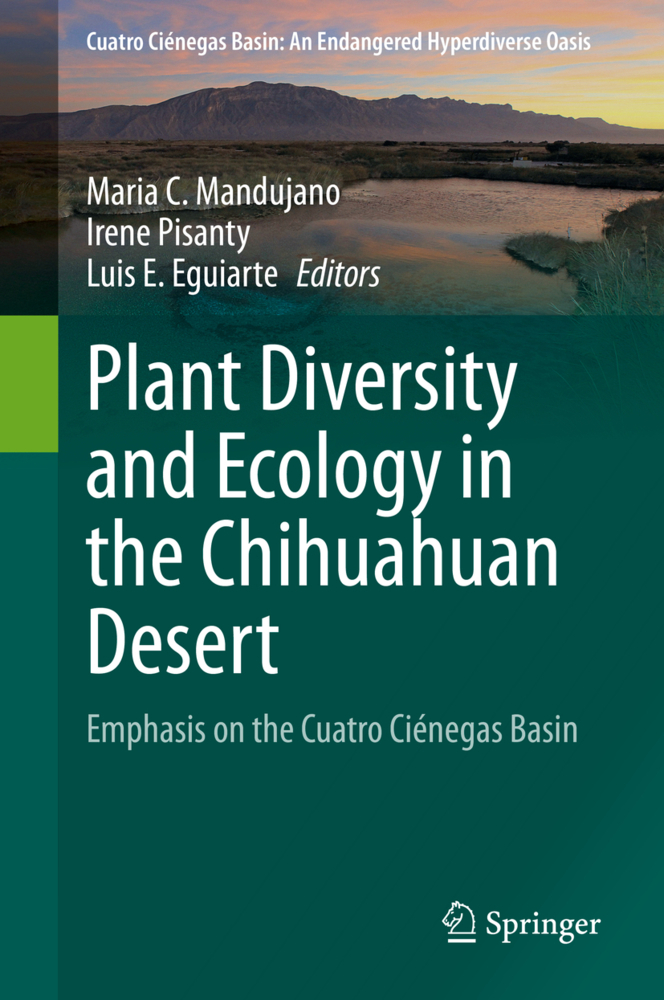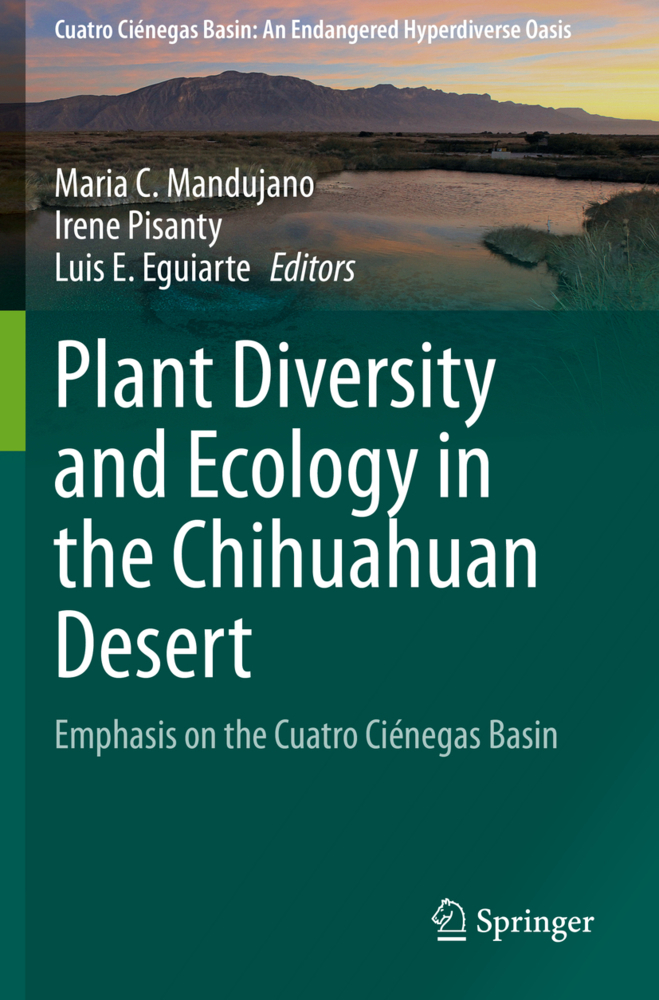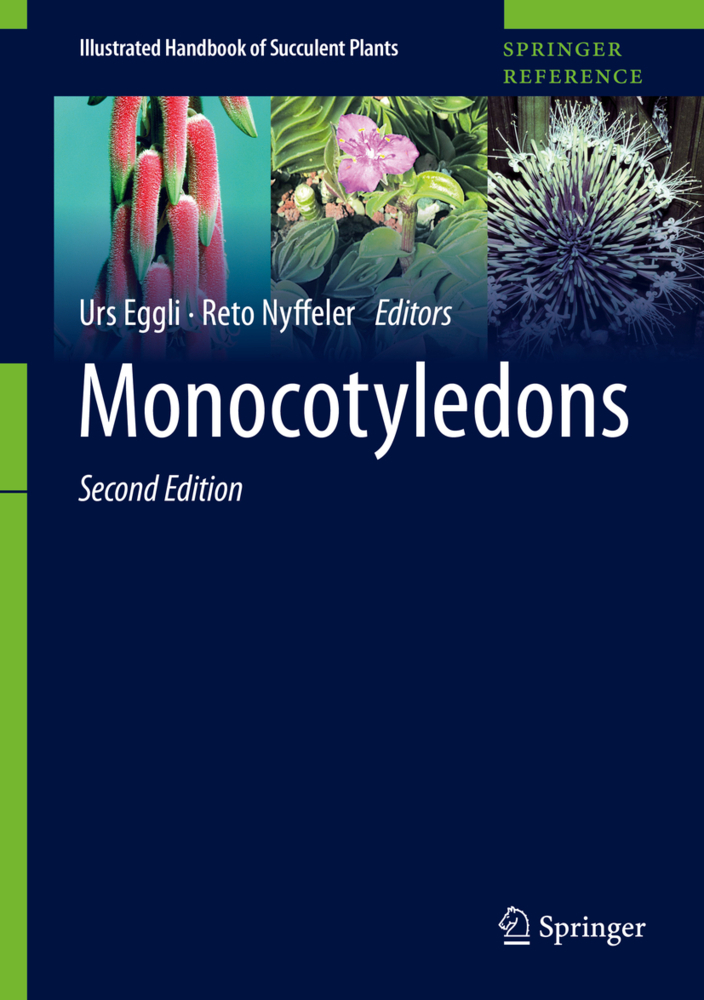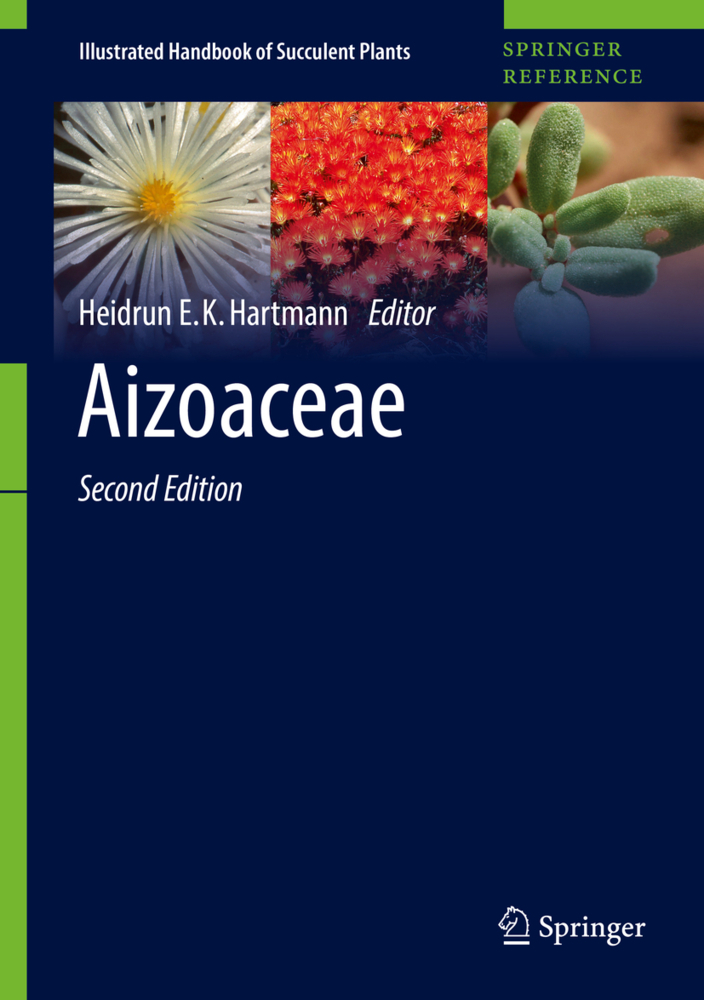Plant Diversity and Ecology in the Chihuahuan Desert
Emphasis on the Cuatro Ciénegas Basin
Environmental and specific diversity in the Chihuahuan desert in general, and in the Cuatro Ciénegas Basin in particular, has long been recognized as outstanding. This book provides a global ecological overview, together with in-depth studies of specific processes. The Chihuahuan desert is the warmest in North America, and has a complex geologic, climatic and biogeographical history, which affects today's distribution of vegetation and plants and generates complex phylogeographic patterns.
The high number of endemic species reflects this complex set of traits. The modern distribution of environments, including aquatic and subaquatic systems, riparian environments, gypsum dunes and gypsum-rich soils, low levels of phosphorous and organic matter, and high salinity combined with an extreme climate call for a range of adaptations. Plants are distributed in a patchy pattern based on punctual variations, and many of them respond to different resources and conditions with considerablemorphological plasticity. In terms of physiological, morphological and ecological variability, cacti were identified as the most important group in specific environments like bajadas, characterized by high diversity values, while gypsophytes and gypsovagues of different phylogenies, including species with restricted distribution and endemics.Section I - The natural history of the plant diversity in the Chihuahuan desert
Chapter 1 - Vegetation and species richness in the Chihuahuan DesertChapter 2 - Biogeography and phylogeography of the plants of Chihuahuan Desert
Chapter 3 - The Chihuahuan Desert, climate change and paleovegetation during the mid-Holocene and Last Maximum Glacial
Chapter 4 - Plants in the desert: diversity and life-forms
Section II - Cuatro Cienegas Basin, a refugia within the Chihuahuan desert
Chapter 5 - Reproductive biology of Grusonia bradtiana (Cactaceae) from the Chihuahuan desert
Chapter 6 - How did Fouquieria come to the Chihuahuan Desert?
Chapter 7 - Between Aridity and Opulence: Resources of the Mexican Desert
Chapter 8 - Ecological importance of Bajadas in the Cuatrocienegas region: a floristic diversity and vegetation analysis
Chapter 9 - Gypsophilous species of Cuatro Ciénegas
Chapter 10 - The ages of life: the changingforms and the history of Coryphantha werdermanni throughout its development
Chapter 11 - Cuatrocienegas: a refugee for the living rock cactus, Ariocarpus fissuratus
Chapter 12 - Reproductive biology and conservation of the living rock Ariocarpus fissuratus.- Chapter 13 - Effect of reproductive modes on the population dynamics of an endemic cactus from Cuatro Ciénegas
Chapter 14 - Conservation status, germination and establishment of the divine cactus, Lophophora williamsii (Lem. ex Salm-Dyck) J. M. Coult., at Cuatrocienegas
Chapter 15 - Genetic and ecological characterization of Arundo donax and Phragmites australis in the Cuatro Ciénegas Valley
Section III - Perturbation caused by the overexploitation of the aquifer, conservation and management.- Chapter 16 - Disturbance and the formation and colonization of new habitats in the terminal part of the Churince System
Chapter 17 - Riparian species and habitats in a semiarid disturbed zone: an unlikely movable feast in the Churince System
Chapter 18 - Morphological variations of Samolus ebracteatus var. coahuilensis in different microenvironments in the Churince System, in the Cuatrociénegas Basin, Coahuila
Chapter 19 - Germination of riparian species in natural and experimental conditions
Chapter 20 - Ecological dynamism of disturbance-induced micro environments in the Churince System, Cuatro Ciénegas, using time series network analyses
Mandujano, Maria C.
Pisanty, Irene
Eguiarte, Luis E.
| ISBN | 978-3-030-44962-9 |
|---|---|
| Artikelnummer | 9783030449629 |
| Medientyp | Buch |
| Copyrightjahr | 2020 |
| Verlag | Springer, Berlin |
| Umfang | XIII, 327 Seiten |
| Abbildungen | XIII, 327 p. 89 illus., 55 illus. in color. |




